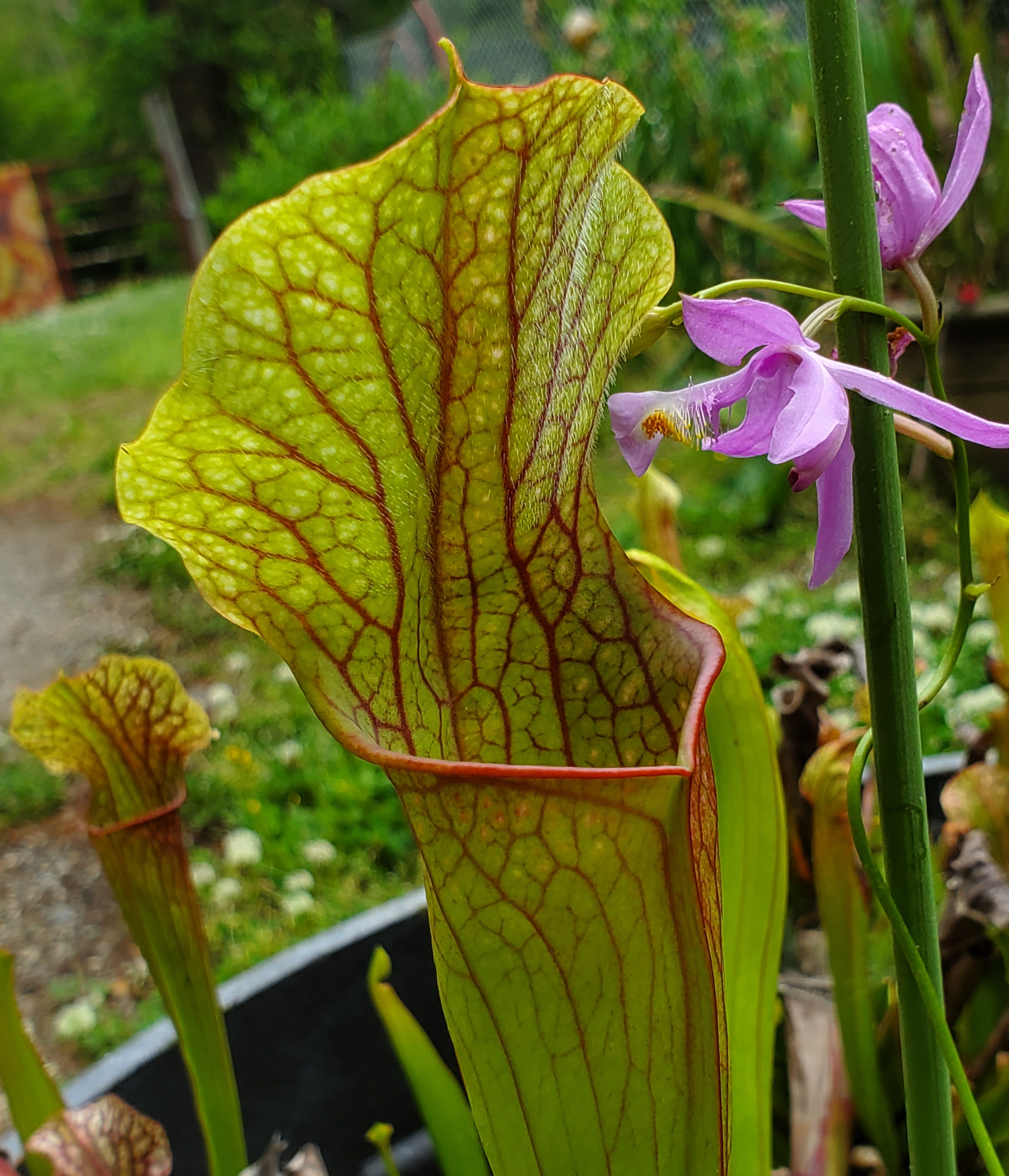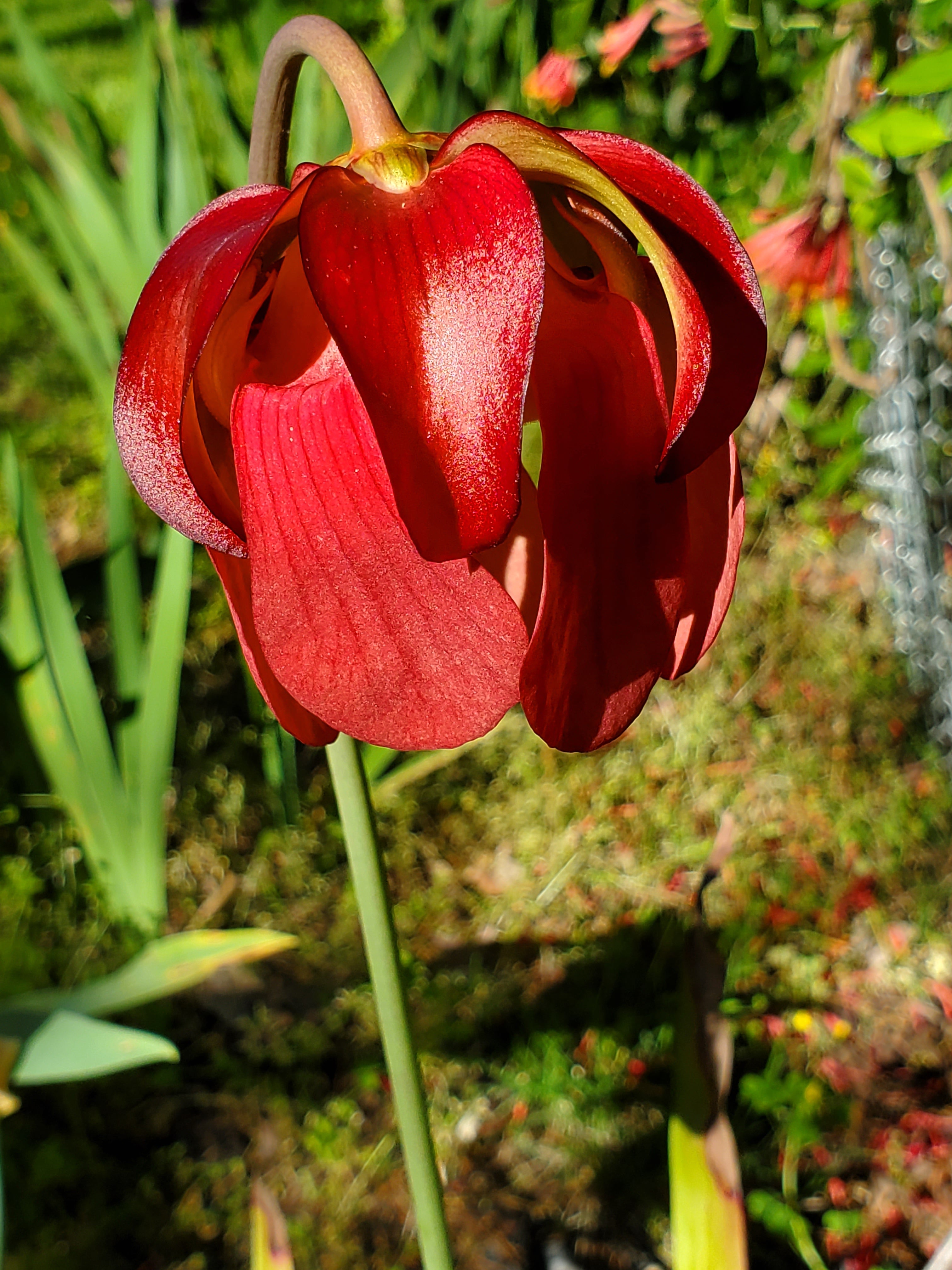Growing picture perfect pitcher plants
Published 6:00 am Friday, June 19, 2020
|
Getting your Trinity Audio player ready...
|
Sometimes a gardener just needs a change of pace, something like a wild child plant that looks as if it came from another planet.
If the gardener is desperate enough, it won’t matter if the plant is super finicky or grows like a weed. Several years ago, my must have plant was the bromeliad Aechmea blanchetiana, which has teeth like a velociraptor and turns bright yellowish orange at the height of our summer heat and humidity. The only way to kill this show piece is to over water it, which isn’t likely to happen in my garden where benign neglect is the norm.
My new must have plant is the Sarracenia, or pitcher plant. There are two species of pitcher plants native to Virginia –S. flava, which is yellow and S. purpurea, which is purple. Both tend to hybridize quite readily. They aren’t found in Prince Edward or surrounding counties, but there are some in Chesterfield and Dinwiddie.
How do pitcher plants work? They have specialized leaves that use nectar, scent and bright colors to lure insects. Unlike the Venus’ fly trap, pitcher plants don’t have any moving parts. Visiting insects have to walk on a very slippery vertical surface in order to reach the nectar. Insects almost always slip and fall to the bottom of the pitcher where there is a pool of water, and they either drown or die of exhaustion. After the visiting insects die, the pitcher plant excretes a liquid containing digestive enzymes that liquify the hapless insects. The result is a nutrient-rich slurry containing nitrates and phosphates that the plant needs.
I’ve been growing a few of these amazing plants for some time, but this year I decided that I needed more and that they needed a companion. In the wild, pitcher plants are found in seepage swamps, boggy depressions, and power line seeps, in other words nutrient poor areas. All of these areas are seasonally flooded, but can become very dry on the surface during late spring and summer.
To grow pitcher plants at home, put a whiskey barrel or other large pot in a sunny area. Fill it with a 50:50 mixture of wet sand and peat moss. Position the pitcher plants in the sand and peat mixture so that the rhizomes are barely covered. Keep the plants evenly moist, but remember that pitcher plants like moist feet, but dry ankles. More pitcher plants have been killed by overwatering than by a lack of moisture. Be sure to water with rainwater; pitcher plants are very sensitive to salts dissolved in the water. Never use chlorinated water or chemically softened water. Never fertilize them and definitely never feed them table scraps, which will cause rot.
Pitcher plants go dormant from late fall through winter. During that period, they can be mulched with pine needles to provide protection drying wind. In spring, remove the pine needles and any leaves that have turned brown. By April, there should be blooms that resemble flying saucers.
What to plant with pitcher plants? Consider a dainty native orchid, the grass pink (Calopogon tuberosus). The tall stems of the orchid will lean against the pitcher plants, providing a contrast of wild and other worldly with sophisticated perfection.
DR. CYNTHIA WOOD is a master gardener. Her email address is cynthia.crewe23930@gmail.com.






